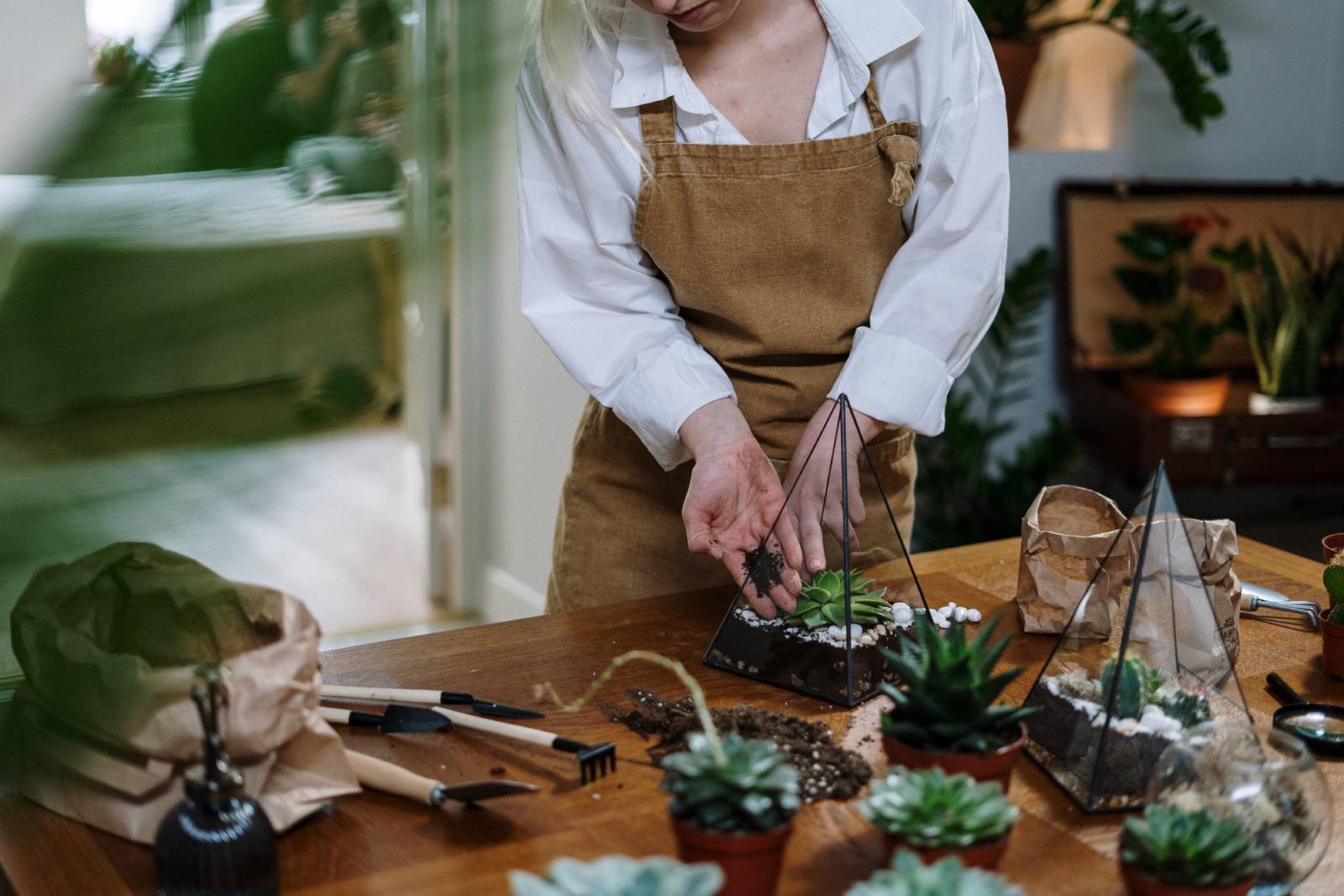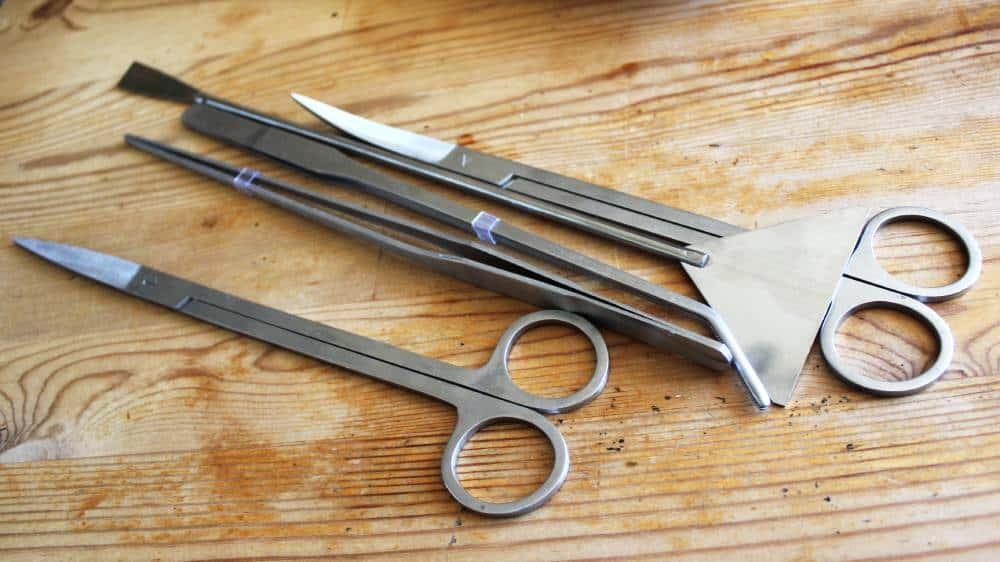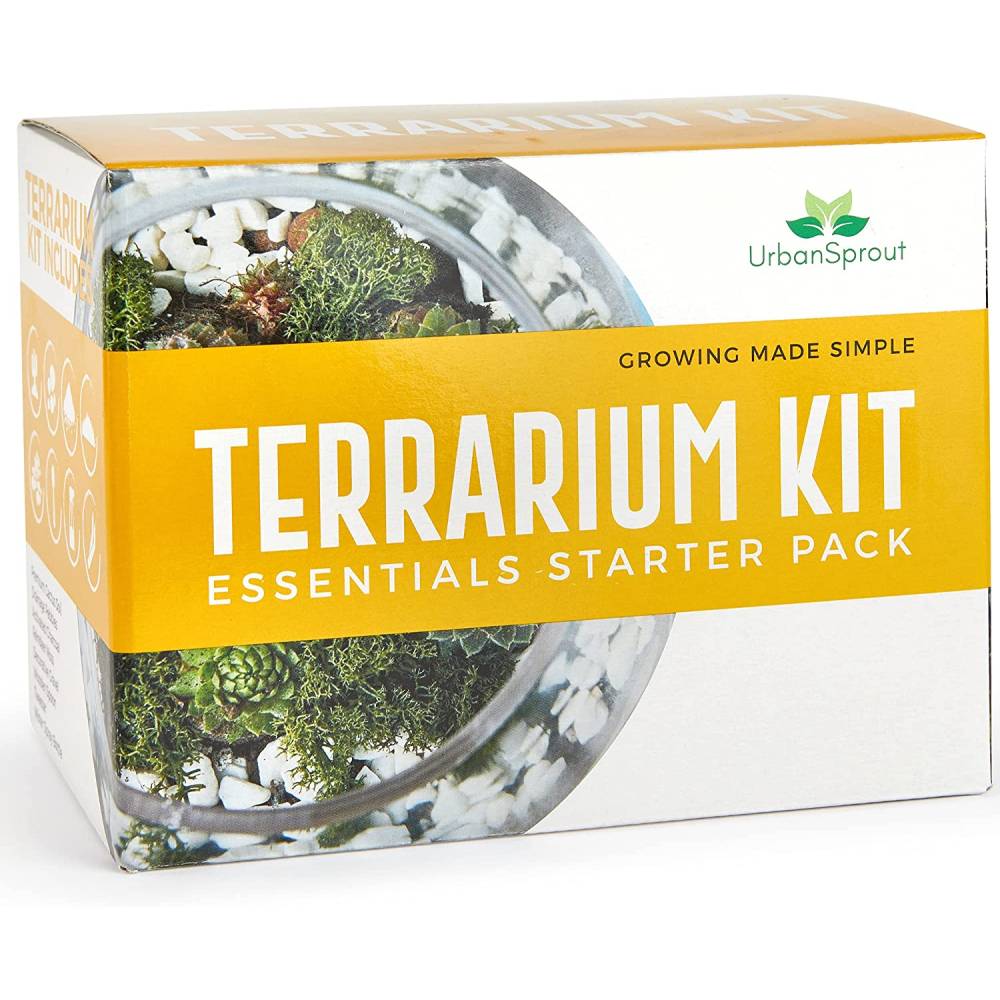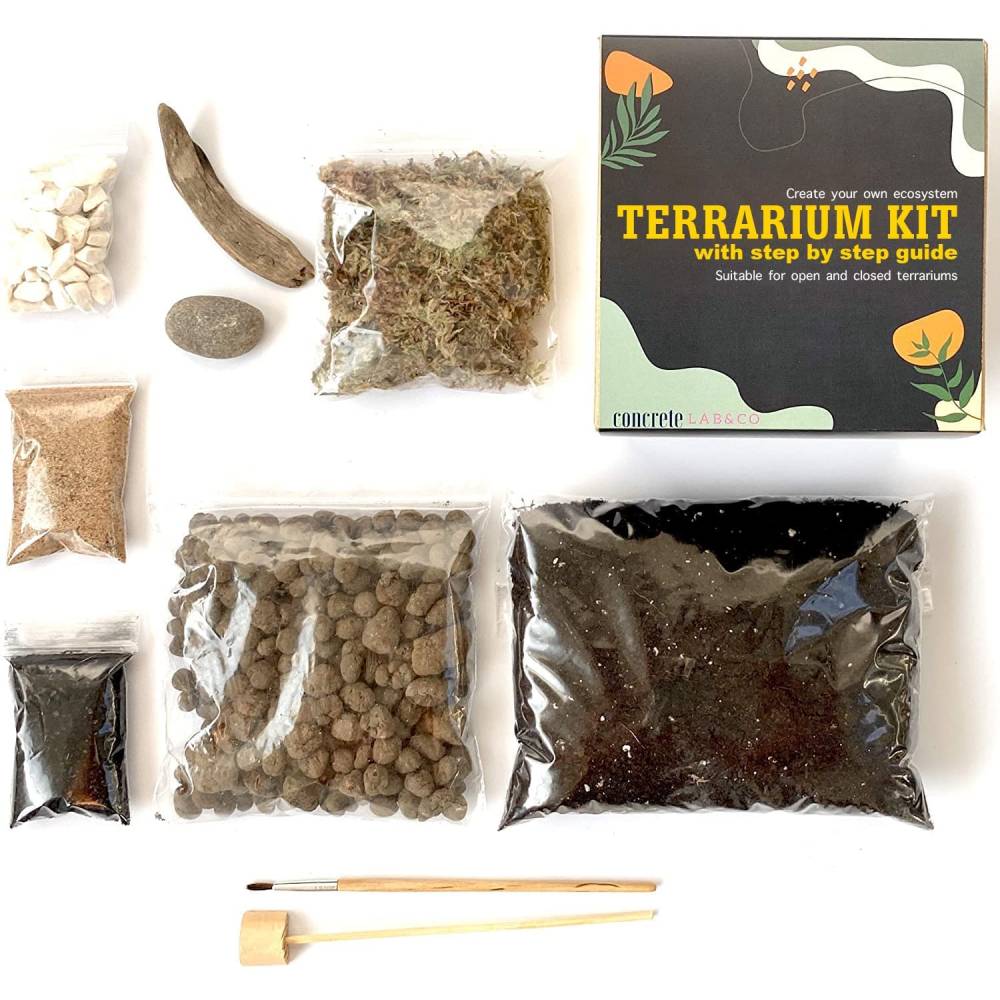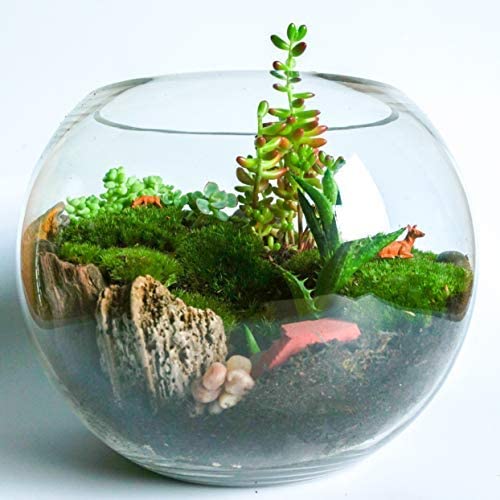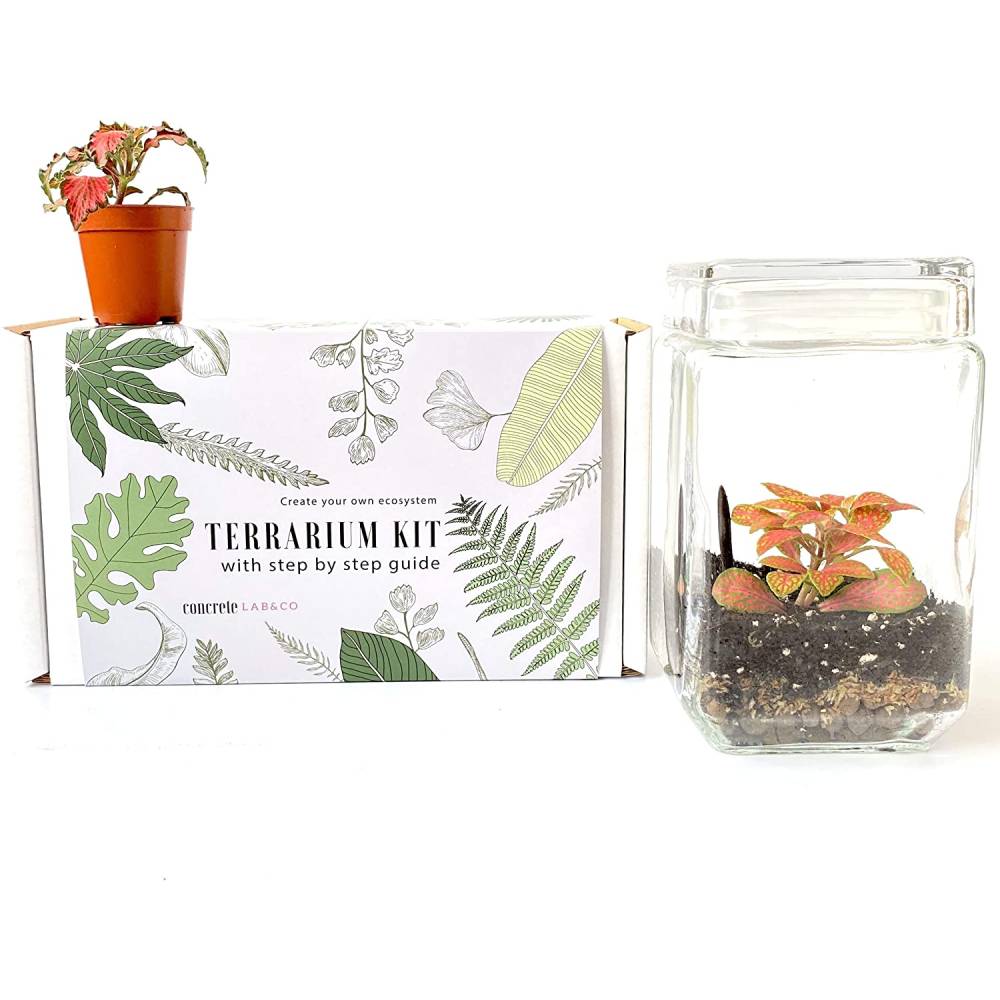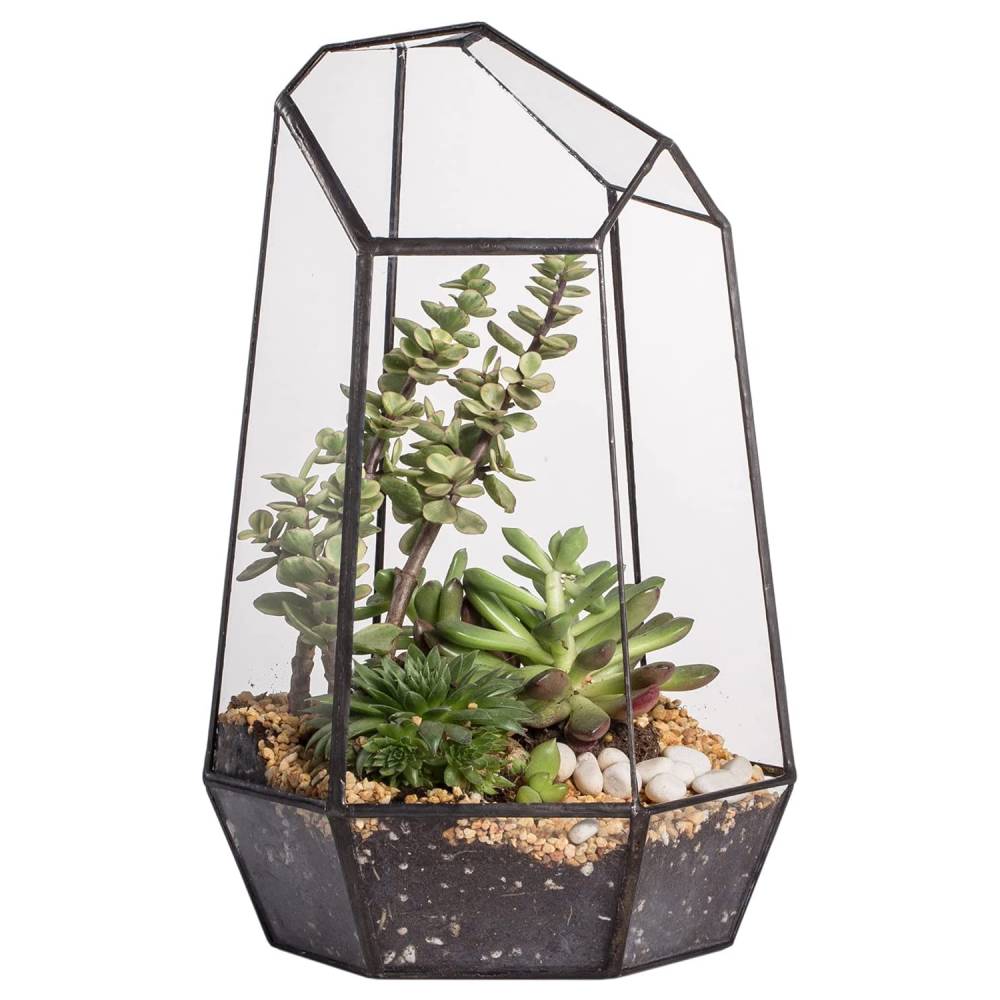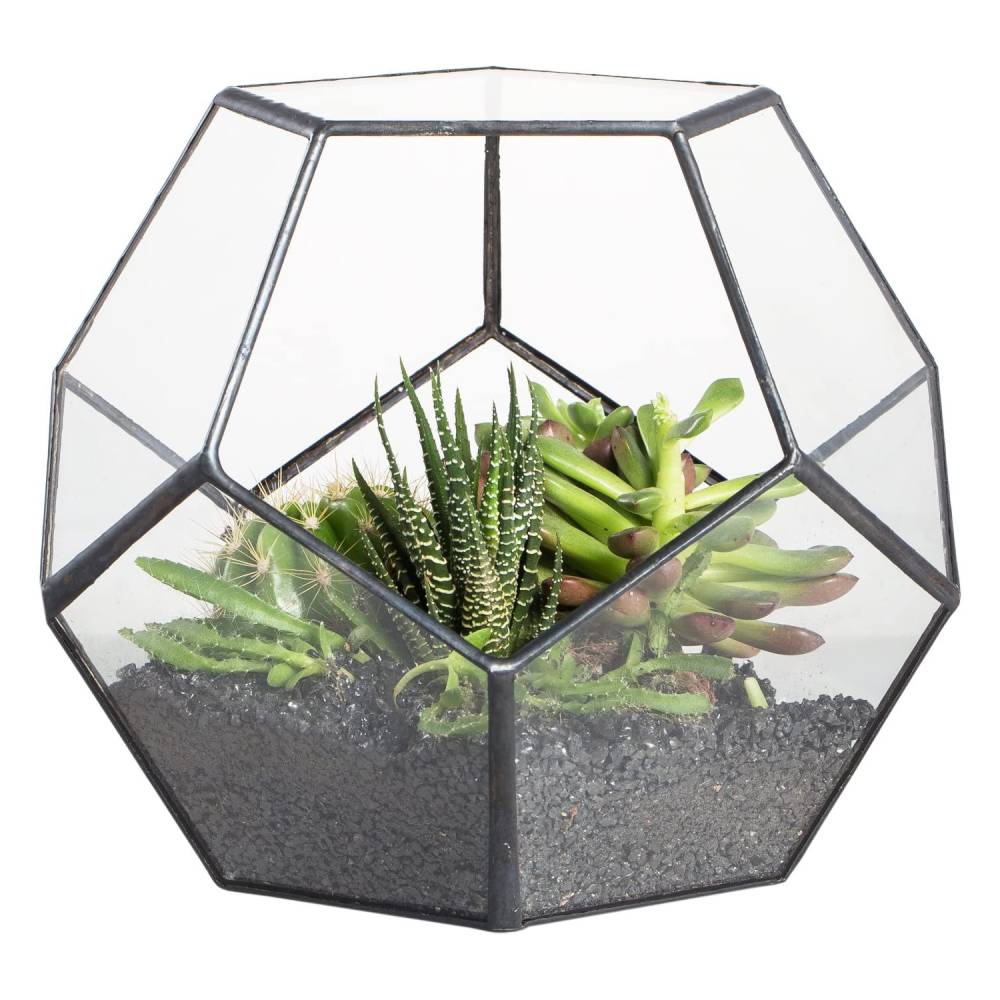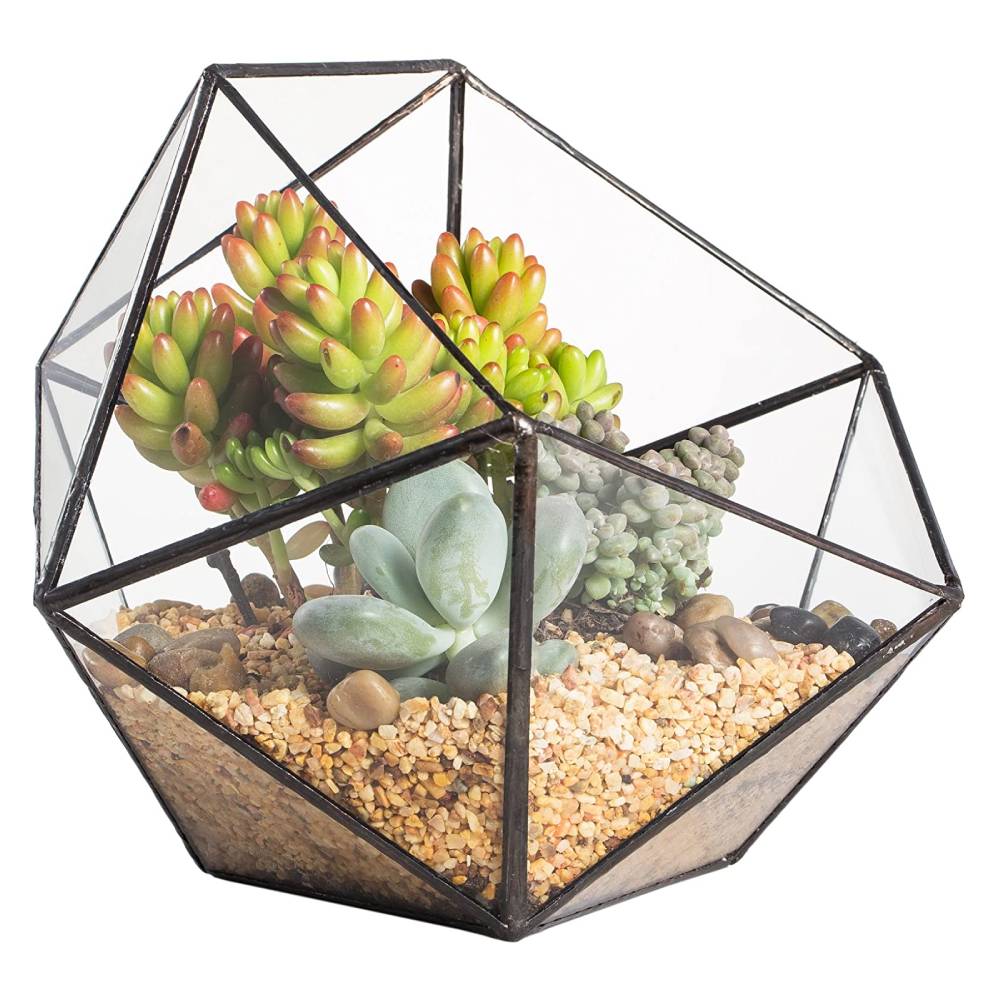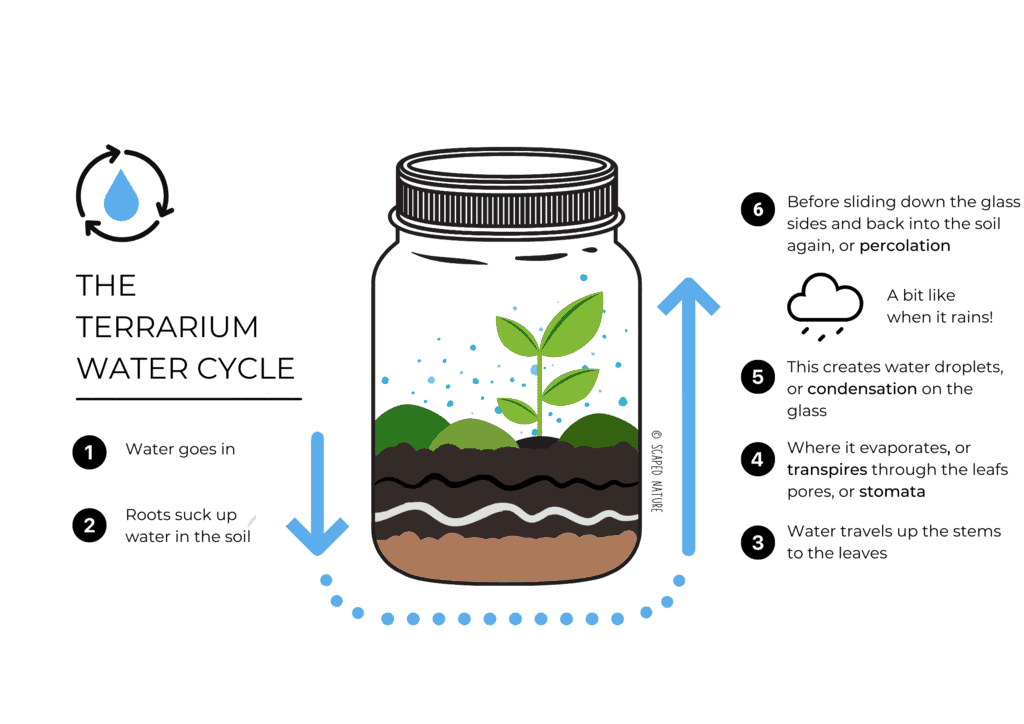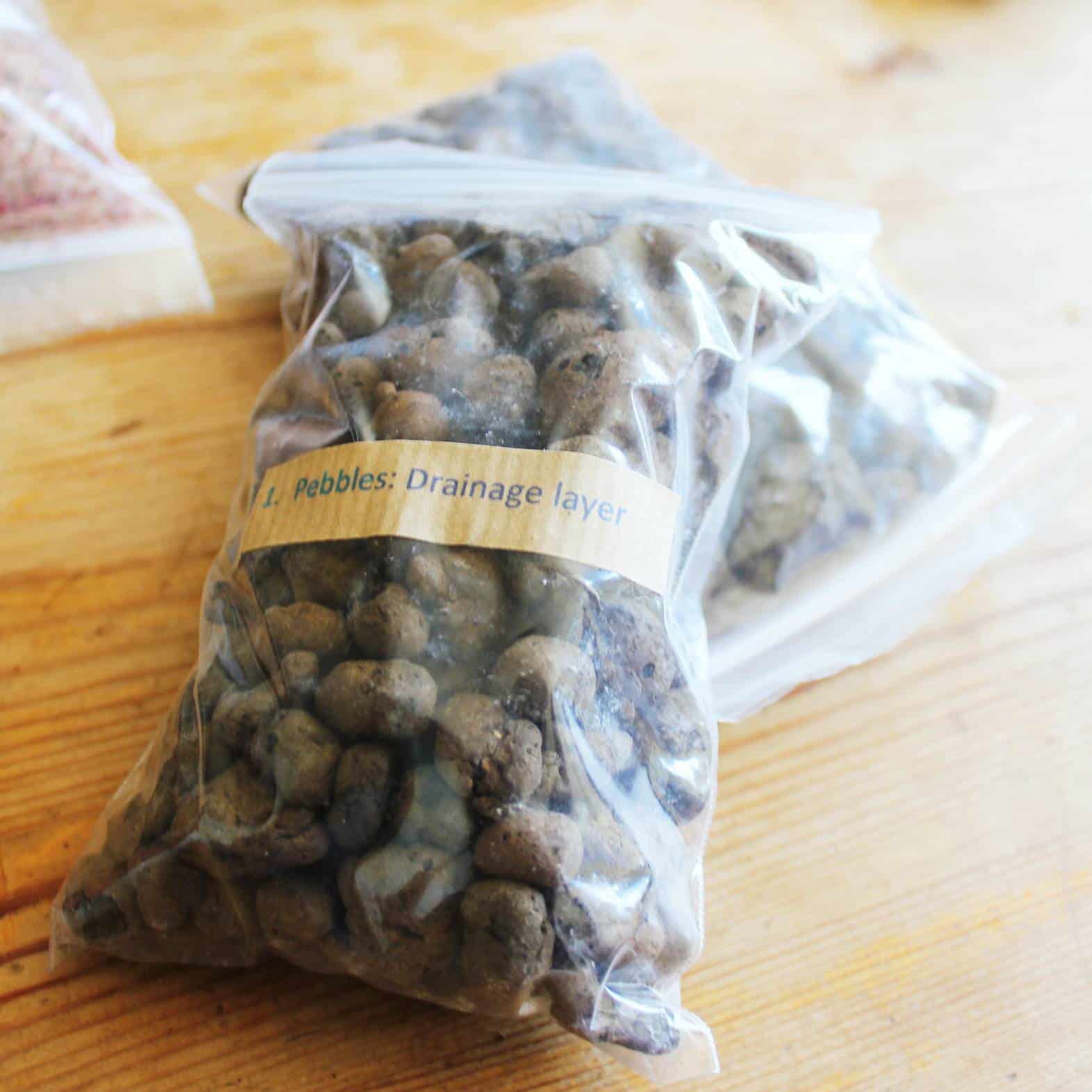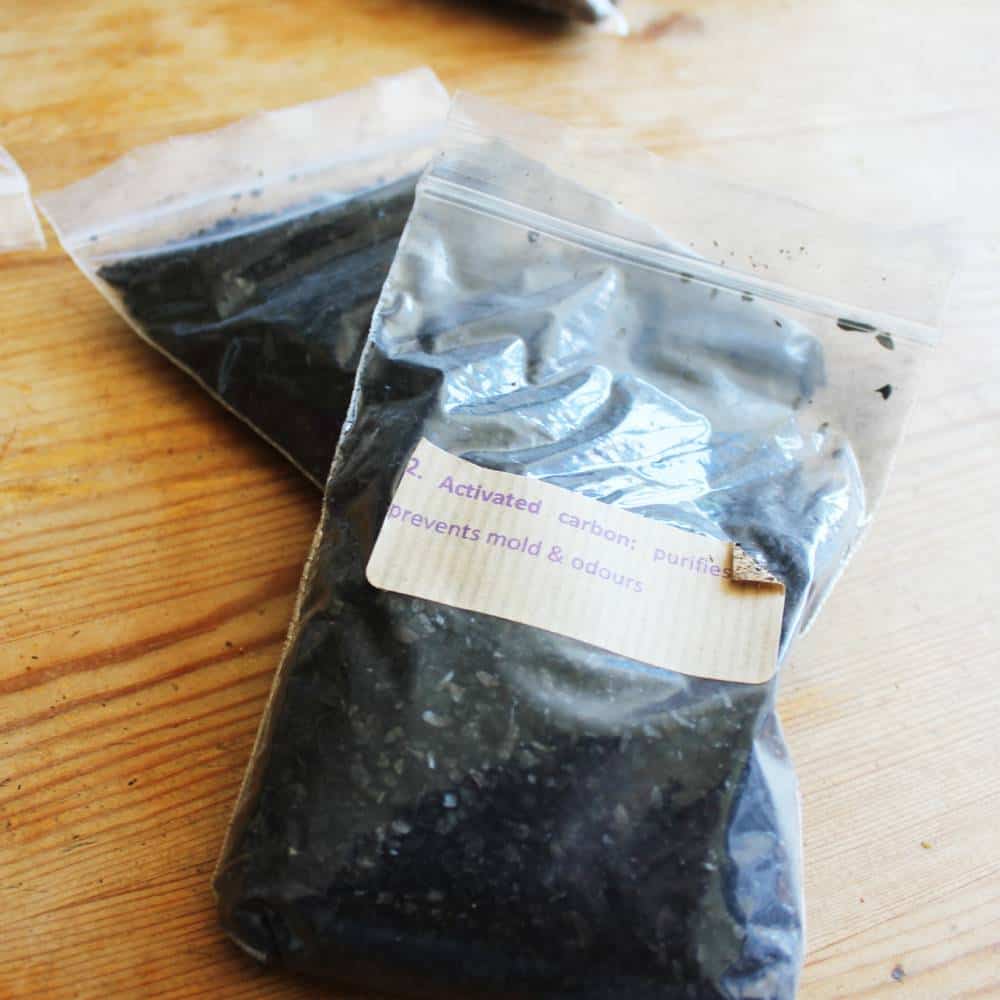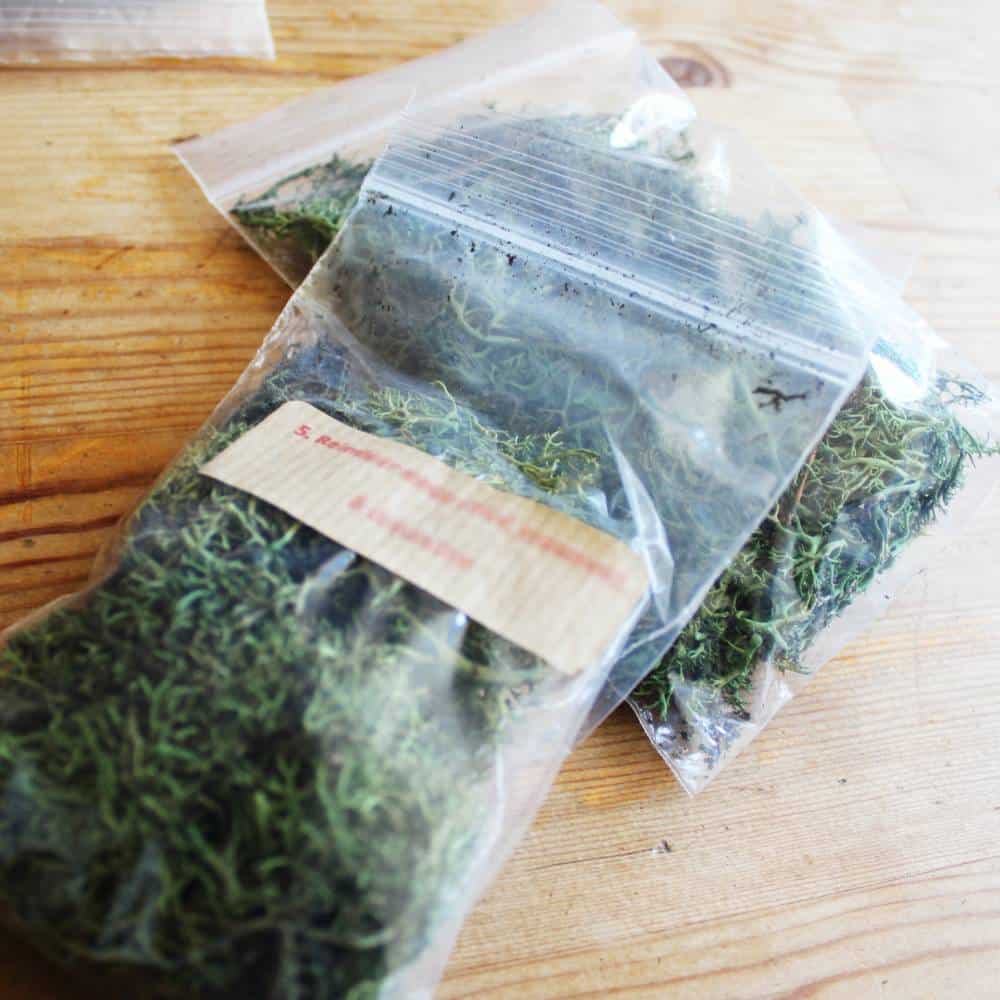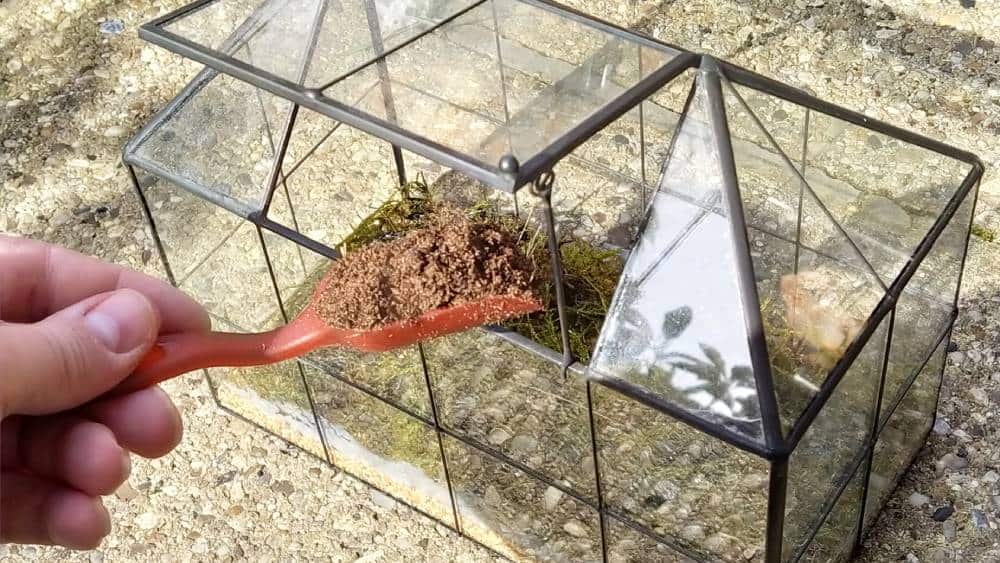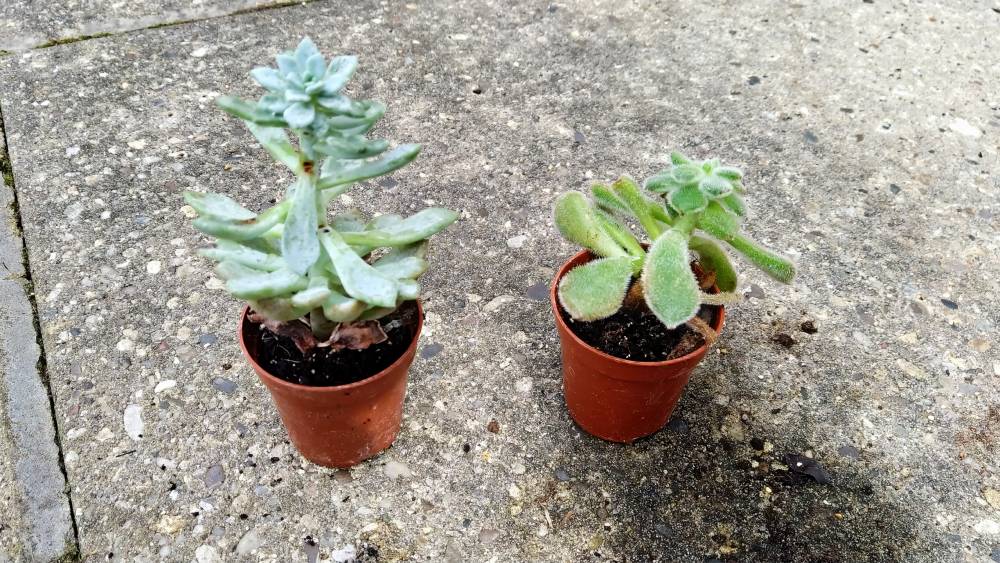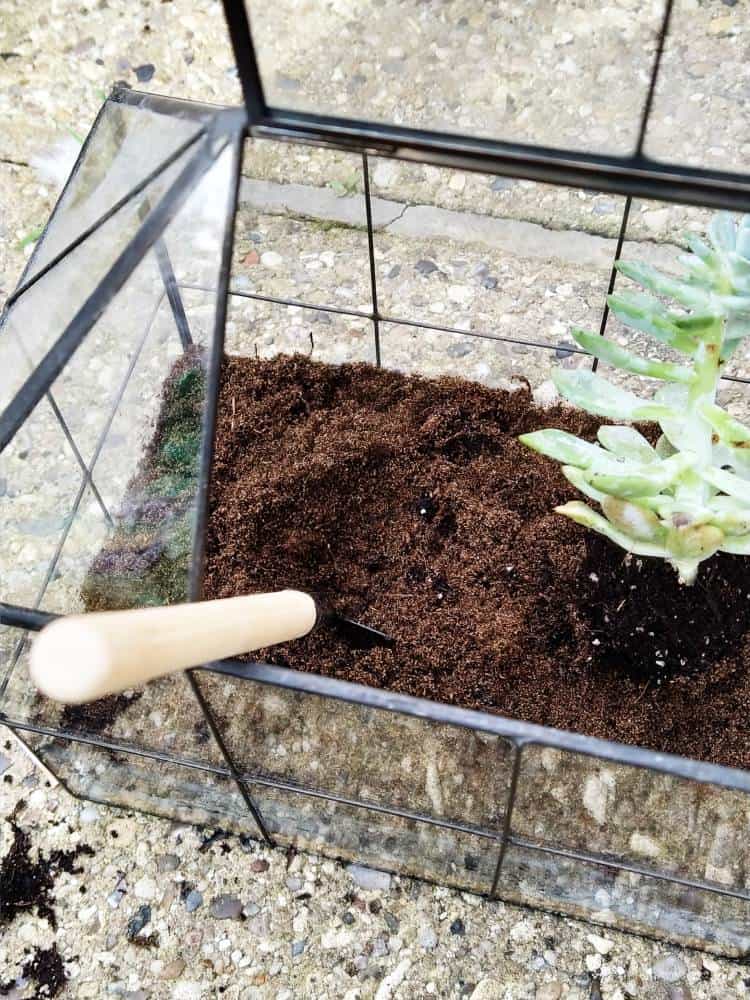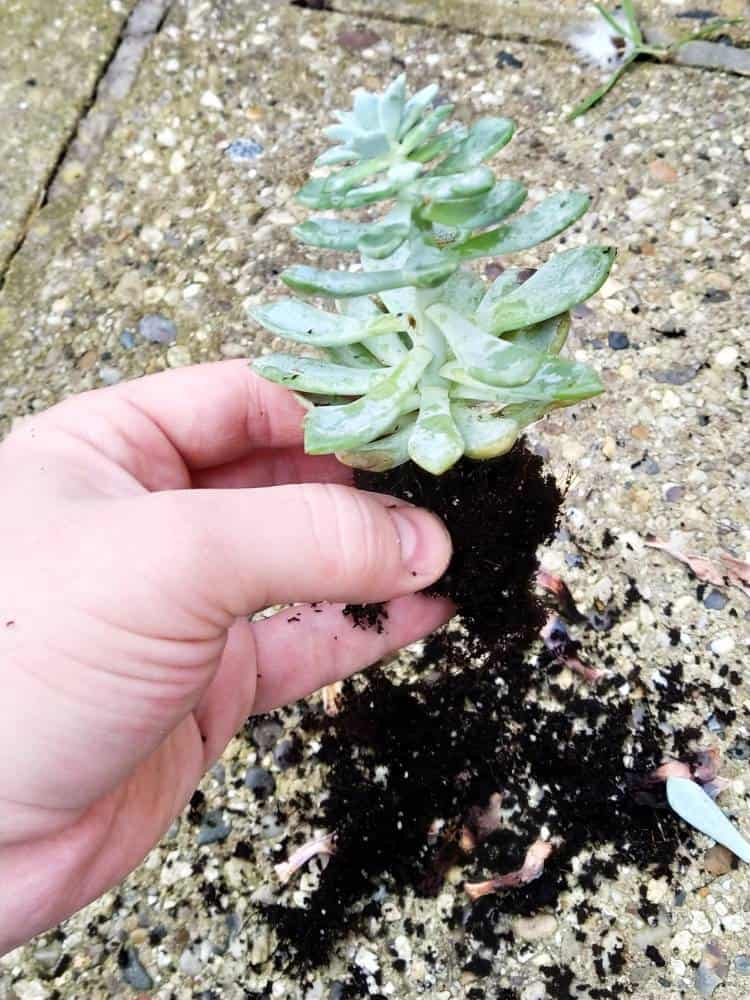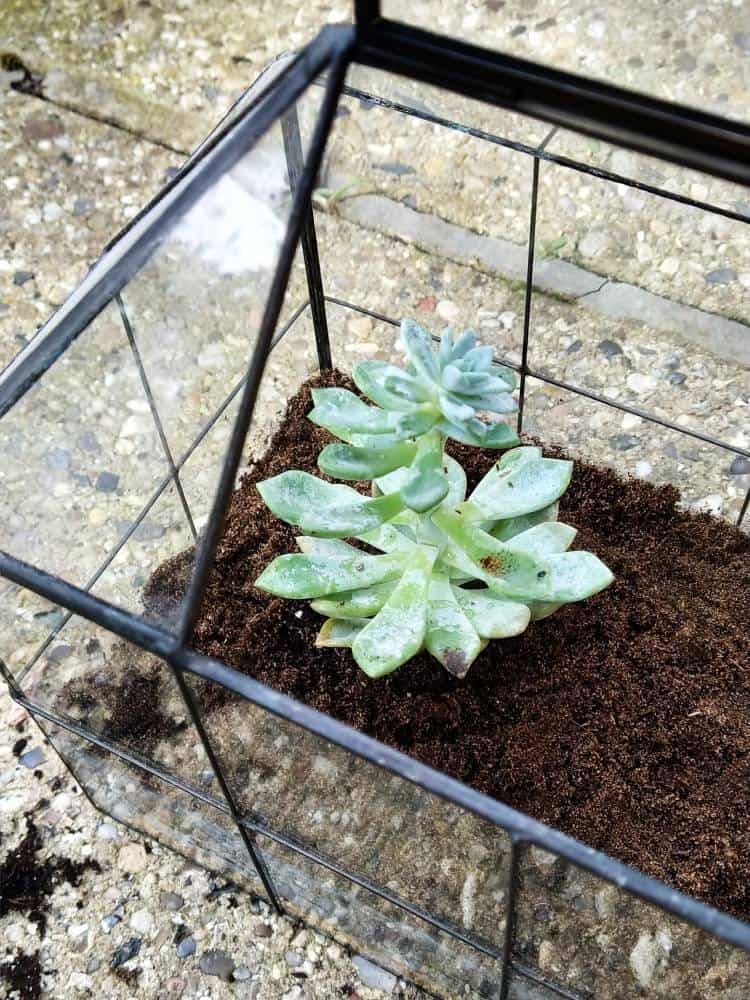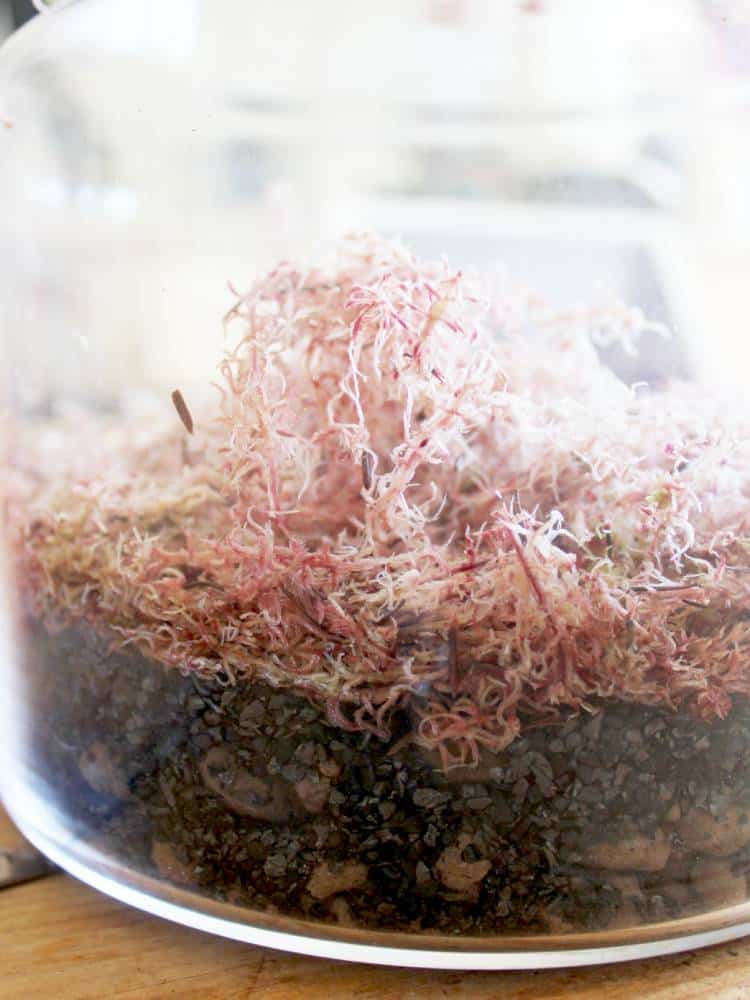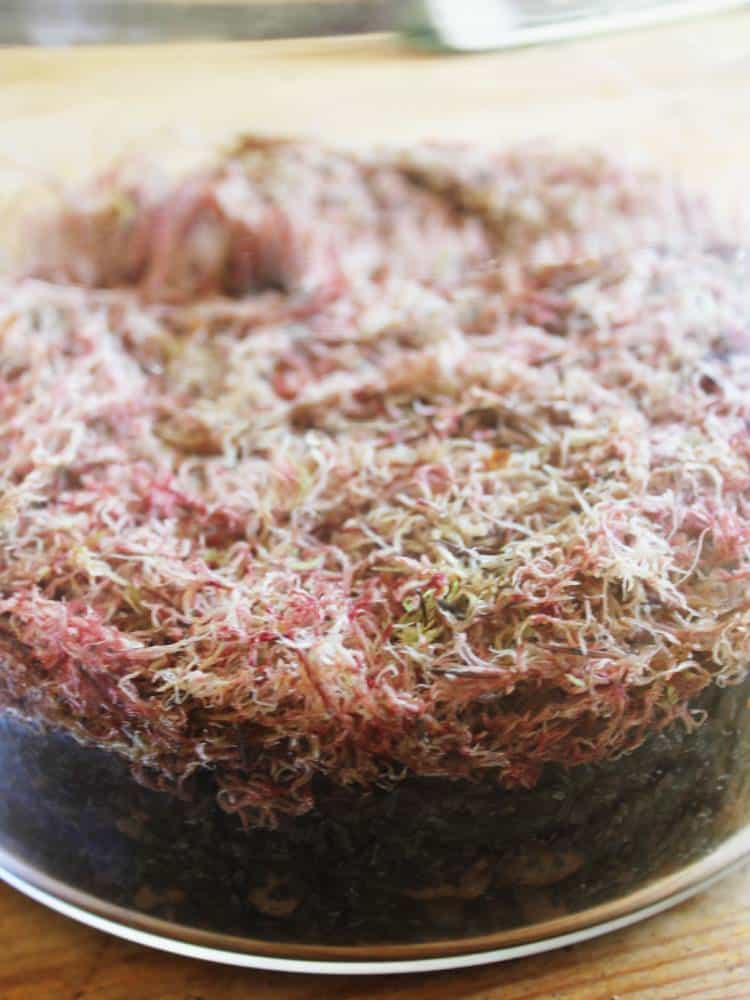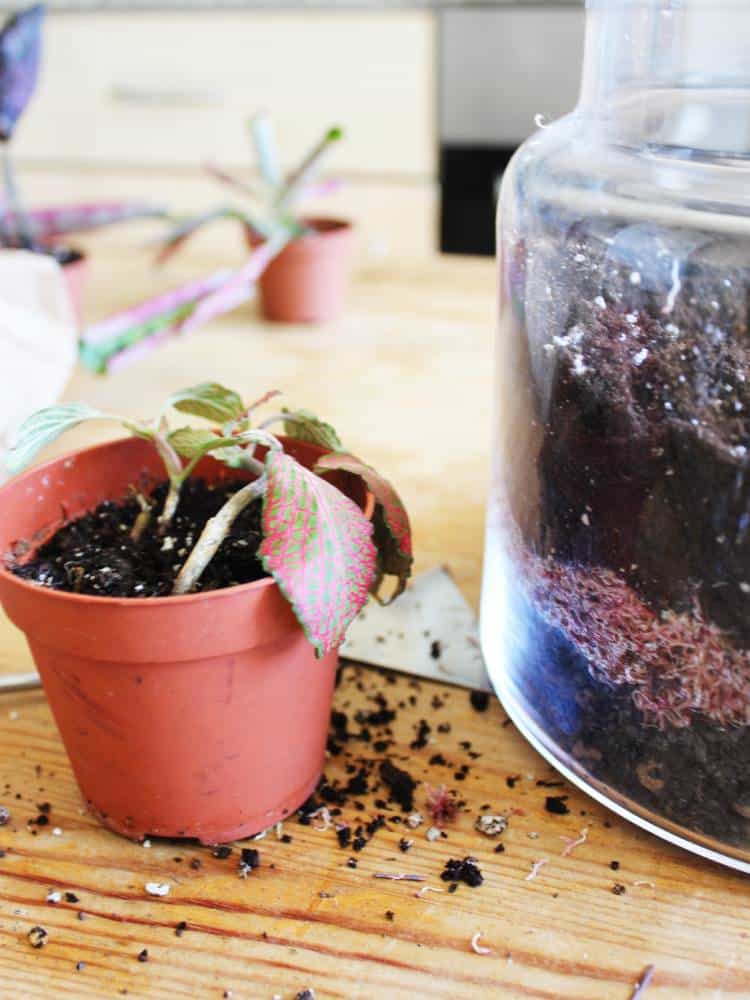Table of Contents
Affiliate Disclosure: We only recommend products we would use and all opinions expressed here are our own. This post may contain affiliate links that at no additional cost to you, we may earn a small commission when you purchase. These commissions help with the running costs of this website, if you do purchase via one of the product links many thanks it is greatly appreciated!
What is a Terrarium?
Terrariums come in many different shapes and sizes, with different styles depending on what plants you have inside your terrarium.
Terrariums are like miniature gardens that are kept within a container inside of your home, making them ideal for people who live inside flats or those who don’t have a garden.
Some Terrariums will be kept sealed once they are created and others are left with an open top, we will go into more detail about this later in the guide.

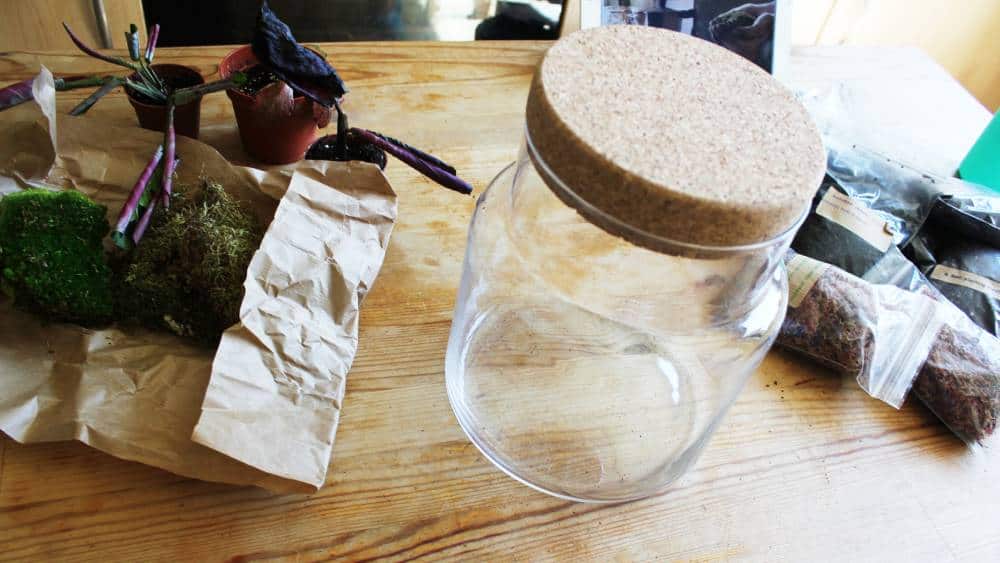
What Is Needed To Make A Terrarium?
If you would love to give a terrarium a go you will need some materials to make it work well, and look nice. Once it is set up well, it will be really easy to care for so it’s worth taking the time to make your beautiful terrarium with care.
Here’s a list of product links of what you will need to make a terrarium:
Terrarium Container
- Glass Jar With Or Without Lid
- Clear Plastic Wrap (If using to create sealed lid)
- Fish Tank/ Lizard Tank
- Handmade Glass Terrarium House
- Geometric Terrarium
- Wide Top Vase
Terrarium Tools
You can just use your hands when making a terrarium, but some small gardening tools specifically for terrariums can be helpful. If you don’t have those, a teaspoon, tablespoon and fork are good alternatives.
Terrarium Decorations
You can use whatever you feel like to decorate your terrarium. Here are some ideas:
- Driftwood
- Glass pebbles
- Small ornaments
- Small branches/ twigs
It is important to ensure any items going into the terrarium are cleaned and sterilised before they are used. This is especially true with any items from your garden like twigs, which could have pesticides, bugs, bacteria or other undesirables on them.
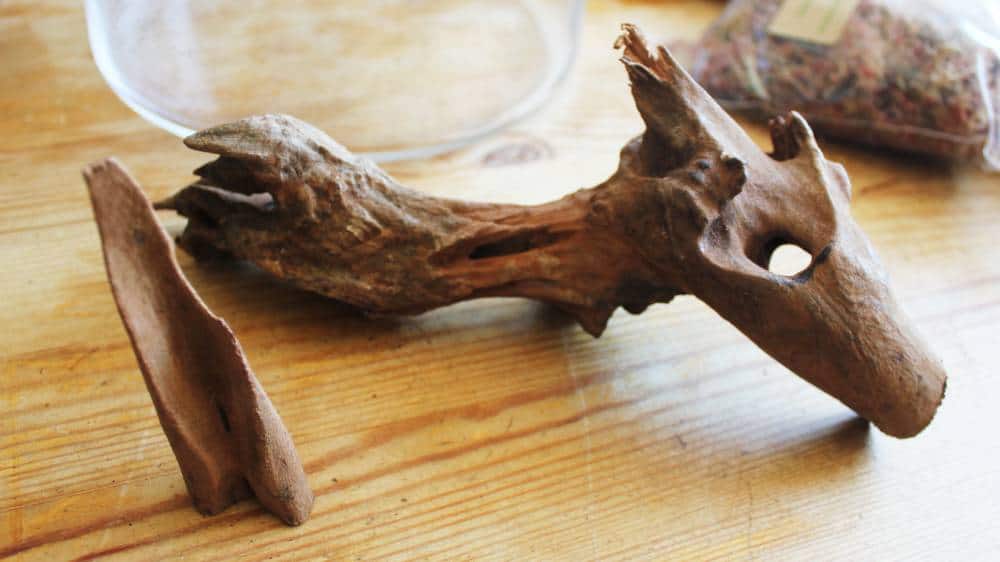
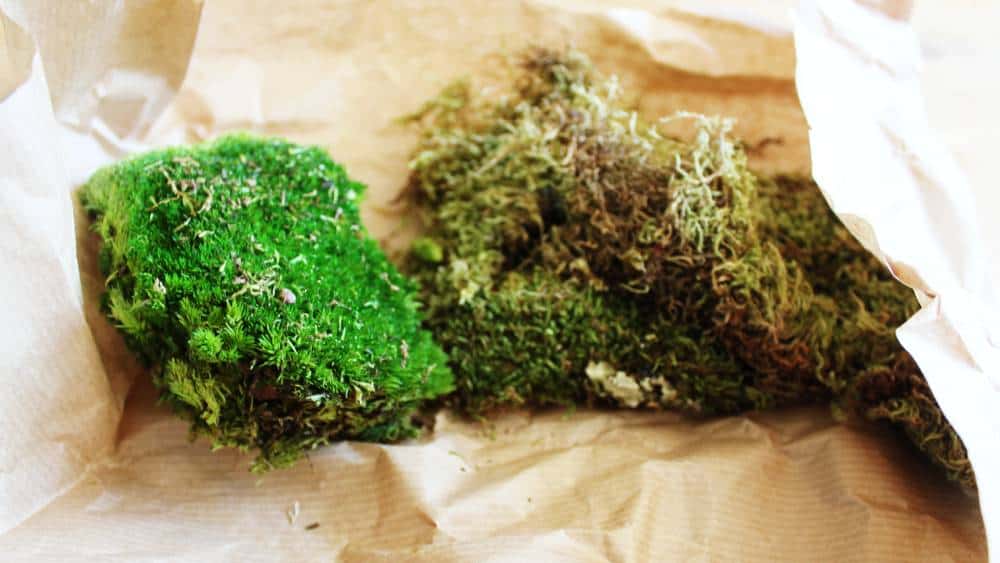
Best Terrarium Kits To Get Started
You want to make a Terrarium, but you don’t know where to start. Making a terrarium is easy and fun, but it’s hard to find the right supplies when you need them.
The selection of Terrarium kits come with everything you need for your first or next terrarium project. They contain all of the essential ingredients so that you can begin growing your own miniature ecosystem in no time at all! With this simple Terrarium guide, even beginners will be able to create their very own living art piece that they’ll love showing off at home or work!
Different Terrarium Sizes
In general, as long as a vessel is transparent, it can be a terrarium. A washed out salsa jar, a vase, an old fish tank – these could all be terrariums. Does that mean you should choose any vessel to get started? Sadly, no. Some terrarium types won’t suit your plant preference. Some may be incredibly tricky to fill.
With so many stunning shapes and sizes, how do you know which terrarium type is right for you?
How do Terrariums work?
Terrariums are set up so that they can recycle the water which is added into the container when it is created. They essentially become a self sustaining ecosystem that will reuse the resources such as the water and nutrients in the soil to keep itself alive.
Over time the plants and soil will release moisture into the air which then condenses on the containers walls, generally glass, which trickles back down into the soil and then filters through the layers of the Terrarium (more details on this later) and then back into the plants roots.
If you have an open top Terrarium you may need to water it more often as the water vapour can escape into the air and out of the container, whereas closed/sealed terrariums air is recycled as it can’t escape the container.
Difference between Terrariums and Vivariums?
Many people can confuse Terrariums with Vivariums which are used for keeping reptiles or insects as pets. They are setup in different ways, Vivariums have to keep the reptile or insect alive so will require certain things such as lighting or heat.
Terrariums are less maintenance and usually just need to be cleaned and watered every so often, along with a little bit of cutting so the plants don’t get overgrown.
Types of Terrarium?
There are 2 types of Terrarium each of which have their own pros and cons which are listed below. One other thing to note is the type of plants you use will dictate what Terrarium is best for you.
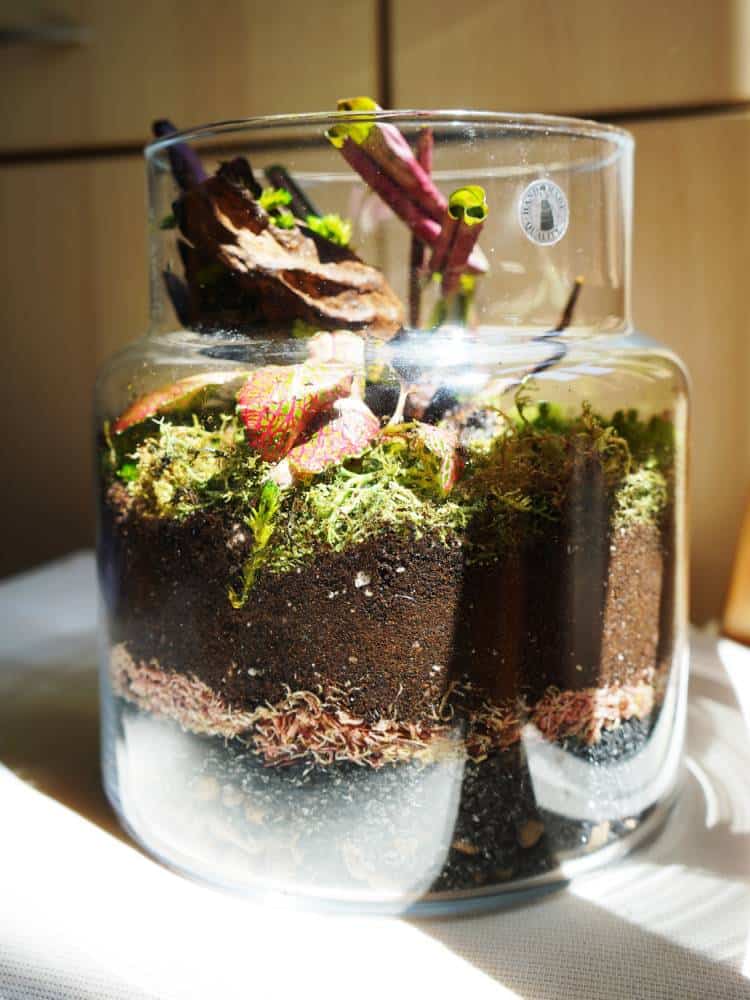

Open Terrarium
Open Terrariums are designed to allow for better airflow and create a less humid environment for your plants. You may also benefit from a lower risk of your plants getting root rot, as the air won’t be too moist which is one of the leading causes of mold.
Open Terrarium Plants
The best open Terrarium plants are suited for dry conditions such as Cacti, succulents and air plants which make for great decorative pieces in your home.
Watering Open Terrarium
You will need to water your open Terrarium more often, roughly every 3-6 weeks to ensure your plants don’t dry up. If you feel the soil with your finger to see how damp it is, if it feels dry or crumbling then give it a drop of water. You can also see through the glass of your Terrarium to see if there is any moisture in the lower layers. Try to use water that is filtered and dechlorinated, if not most tap water should be fine.
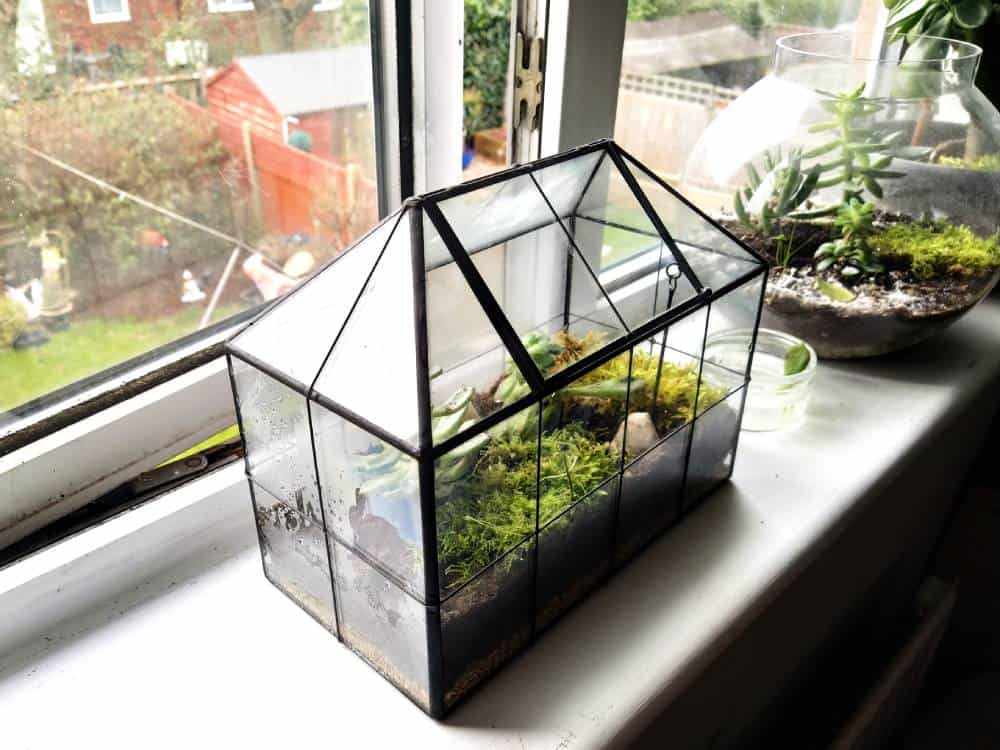
Closed Terrarium
Closed Terrariums will usually have a lid that creates a seal so that no air can escape from the Terrarium, this will make the Terrarium into a self-sufficient eco system that recycles the water and nutrients in the Terrarium. As mentioned previously in the start the plants and soil will release moisture into the air which then condenses on the containers walls and trickles back down into the soil.
Closed Terrarium Plants
You want to aim for plants that love to be in hot or humid conditions such as any tropical plant, Nerve Plants, Polka Dot Plants, Pilea or spider plants there are many more too! You can check out this great list of closed Terrariums plants from the Terrarium Tribe. Make sure to not sue any plants that like dry or arid conditions such as succulents or cacti.
Watering Closed Terrarium
You may need to water your closed Terrarium every couple of months, however they usually can be left with the water that you originally put in them. If you can see water droplets on the glass then this should be enough and wont need to be watered. If you do need to water a closed Terrarium use only a very small amount like a few drops or a spray from a water misting bottle. You should try to use water that is filtered and dechlorinated, if not most tap water should be fine.
Layers in Terrarium?
Terrariums generally will have a variety of layers that each have their own function in keeping your plants alive and healthy. There are 5 essential layers which are listed below, you can also see the graphic which illustrates this too.
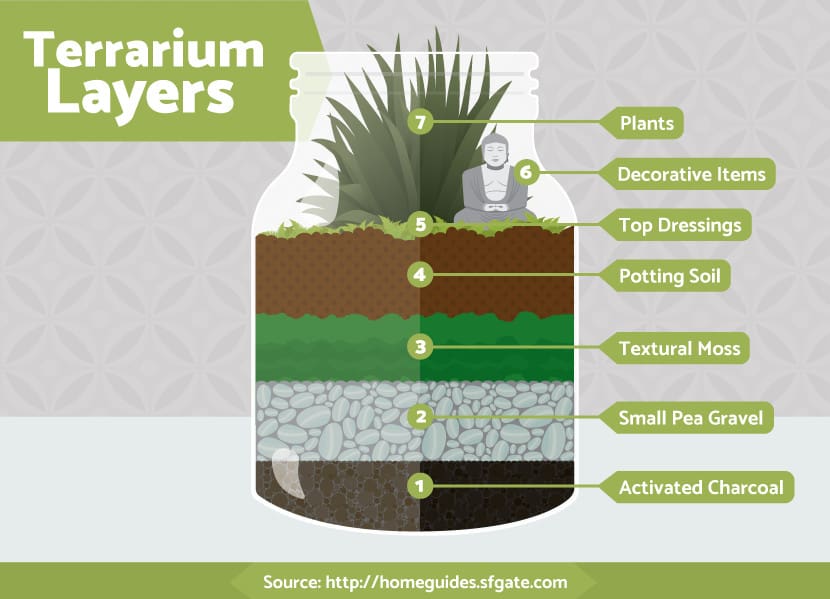
Layer 1 – Activated Charcoal (Drainage Layer)
The activated charcoal will help filter water that drains through the layers of your terrarium, giving fresh pure water to your plants.
The drainage layer of your Terrarium will reduce the risk of your plants roots rotting from sitting in stagnant water and the other added benefit is that the charcoal will help to reduce any odours that build up over time.
Layer 2 – Pea Gravel/Fine Stones
The layer of fine pea gravel or stones will act as an additional drainage layer for the water to drain through and is a little more decorative than charcoal.
Layer 3 – Moss
The layer of Sphagnum Moss will act as a barrier between your soil and your Terrarium’s drainage layer. This will help prevent any loose bits of soil from rotting lower down in the water heavy drainage layer, it will benefit the overall health of your Terrarium.
You can use dried moss or sphagnum moss on this layer, make sure to layer the moss so that soil cannot filter through. The moss will also help to absorb any excess water in the soil layer.
Layer 4 – Potting Soil
The soil layer will be where your plants live, so make sure to use the right soil such as Miracle Grow succulent soil. You want to ensure that your soil is rich in nutrients so that your plants have lots of food to grow big and strong.
Depending on the type of plant you use will determine what soil is needed, as soil designed for tropical plants won’t be suited for plants that prefer arid environments. Generally speaking you can buy more generic potting soil which is a good all rounder but may not work for all plants.
Layer 5 – Top Dressings & Moss
You can layer the top soil with some decorative moss, stones or even a few ornaments such as models/statues to give your terrarium some style.
Layer 6 – Terrarium Plants
There are a variety of plants for terrariums, depending on the style of terrarium you are looking for such as an open top or closed terrarium. Check out our handy list of plants for a terrarium here.
How To Make A Terrarium Step By Step
A terrarium can be an ornate, open container for your favourite plants. It can also be a beautiful sealed ecosystem creating a warm, humid environment for all kinds of plant types. With the right decorations and layout, your terrarium could last years (or even eternally) providing an aesthetically pleasing living decoration in your home to enjoy.
For a terrarium to work, you have to ensure that it is made well from the beginning. By using the right process of creation, tools and materials you can build a terrarium that thrives.
Read on to find out the exact processes needed to create strong, successful, open and closed terrariums that last:
How To Make A Closed Terrarium
Your Base Layers
- Make sure your glass vessel is clean, dry and free from any cracks before you start filling it.
- Place clean, washed pebbles at the bottom of the vessel up to around 1-2 inches and level them out. This layer is essential to provide drainage for your plants, preventing root rot.
- Sprinkle the activated carbon all over the pebbles until they are covered. There is no need to add a lot, just enough to cover them all. This layer is essential to help prevent mould and bad smells developing in your terrarium.
- Spread sphagnum moss all over the activated carbon until you can no longer see any of it. This layer is important as it helps to suck up excess moisture and retain it within your terrarium. It also helps to keep the soil mixture and the lower layers separate.
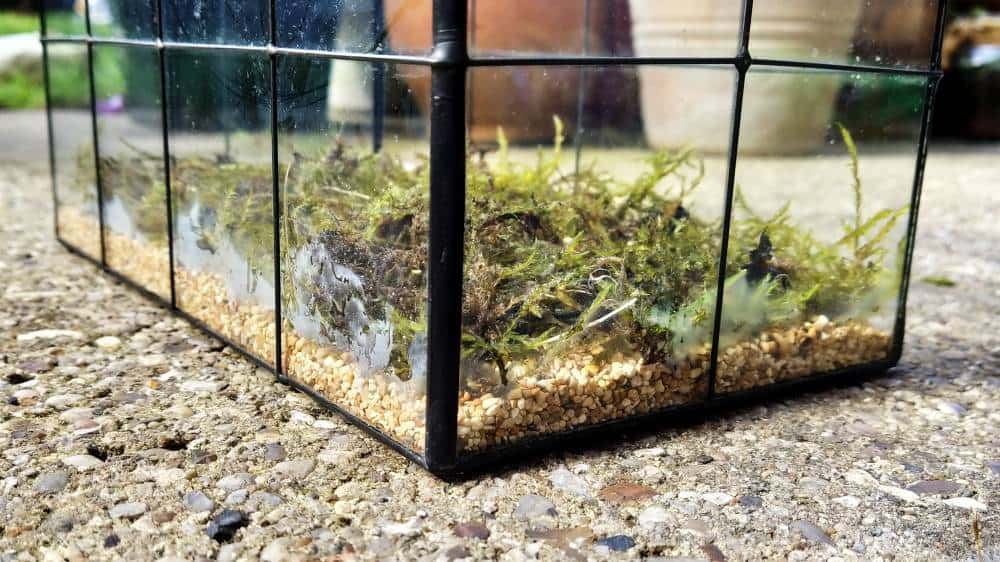
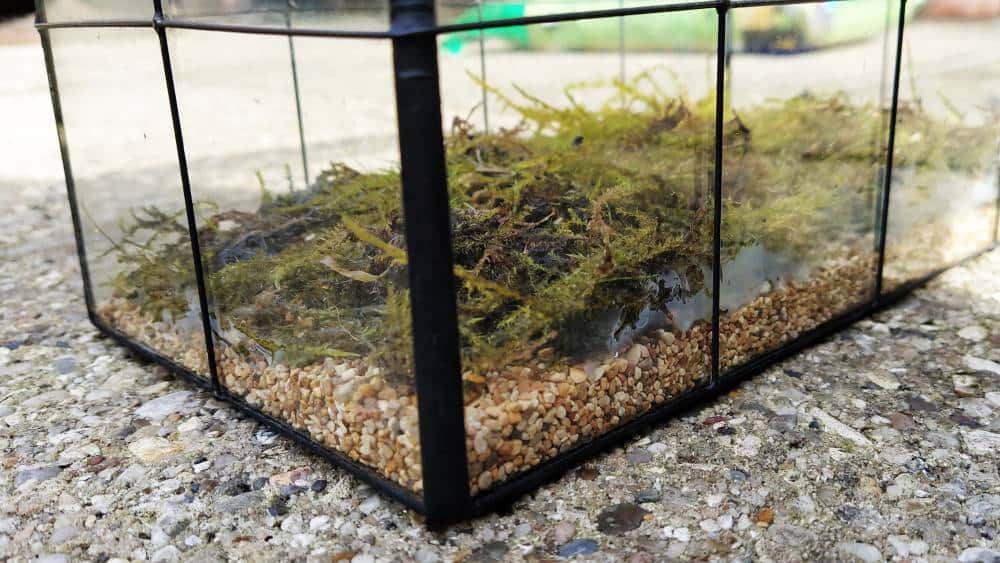
Planting Your Plants
- Now you can gently sprinkle soil over the sphagnum moss to around 3-4 inches, or enough to house your plant roots (use your best judgement). Use your hands, or your tools to flatten out the soil gently, before watering it slightly if it is bone dry.
- Get your plants ready for the terrarium.
- Create a hole large enough for your plant using a tool or your hands. You should pick a spot where the plants leaves will not be in contact with the glass.
Skip step seven if you have bare-rooted plants
- Gently massage the soil from the roots of your plant so that only the root ball remains.
- Place your plant into the hole you created and fill around it until it is secure, and the soil around it is patted down. It should sit level with the rest of the substrate, rather than forming a mound.
- Repeat steps 6, 7 and 8 for additional plants or pillow moss.
- Place any other moss in the terrarium along with your accessories.
Closed Terrarium Maintenance
- With sealed terrariums you may only need to water it once, and then never again. If there is water collecting on the sides inside, that can suggest there is enough moisture in there for your plant. You do need to play it by ear though, as some terrariums do need some misting or a gentle bit of water every now and again. The golden rule is that a little goes a long way – you can always add more, but you can’t take it away.
- If you see any mould, mildew, dying leaves or signs of decay remove them straight away.
- Only trim plants as and when they seem to be outgrowing the vessel.
- Keep your sealed terrarium out of direct light and away from cold spots.
How To Make An Open Terrarium
Your Base Layers
- Make sure your glass vessel is clean, dry and free from any cracks before you start filling it.
- Think carefully about how far up the vessel you want the plants to sit as this will help you decide how much filling you need to put in. Do be careful with open vessels like cylindrical vases as too much filling could leave them viable to cracking or bursting.
- Place clean, washed pebbles at the bottom of the vessel up to 1-2 inches (or more if you want a higher display) and level them out. This layer is essential to provide drainage for your plants, preventing root rot.
- Sprinkle the activated carbon all over the pebbles until they are covered. There is no need to add a lot, just enough to cover them all. This layer is essential to help prevent mould and bad smells developing in your terrarium.
- Spread sphagnum moss all over the activated carbon until you can no longer see any of it. This layer is important as it helps to suck up excess moisture and retain it within your terrarium. This is important as it also helps to keep the soil mixture and the lower layers separate.
If you are planting a succulent or cacti open terrarium you should switch sphagnum moss for clean horticultural sand instead.
- Now you can gently sprinkle soil over the sphagnum moss or sand to around 3-4 inches, or enough to house your plant roots (use your best judgement). Use your hands, or your tools to flatten out the soil gently, before watering it slightly if it is bone dry. If planting succulents and cacti you may wish to avoid any watering of the substrate until the plants have settled in to avoid any rotting.
Planting Your Plants
- Create a hole large enough for your plant using a tool or your hands. You should pick a spot where the plant’s leaves/ spines will not be in contact with the glass.
Skip step 8 if you have bare-rooted plants
- Gently massage the soil from the roots of your plant so that only the root ball remains.
- Place your plant into the hole you created and fill around it until it is secure, and the soil around it is patted down. It should sit level with the rest of the substrate, rather than forming a mound. If you are planting cacti, use folded newspaper, tongs or spoons to gently place the item without hurting yourself.
- Repeat steps 7, 8 and 9 for additional plants.
- Decorate your terrarium with your accessories.
Open Terrarium Maintenance
- With open terrariums you may only need to water once a week or less, depending on your chosen plants. Be really careful with succulent and cacti terrariums and water sparingly. Too much water can rot them and kill them quickly, especially in a glass container. The golden rule is that a little goes a long way – you can always add more, but you can’t take it away.
- If you see any mould, mildew, dying leaves or signs of decay remove them straight away.
- Only trim plants as and when they seem to be outgrowing the vessel. Alternatively, let the plant go wild – that’s the beauty of an open terrarium.
- Keep your terrarium in the right light and away from cold spots, as you would with any houseplants.




